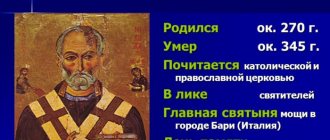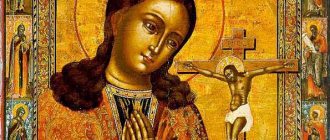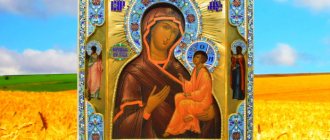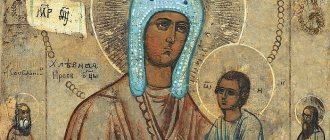Two Davids
Like many psalms, the fiftieth is preceded by a so-called “inscription” - a title that is not part of the poetic text. This, so to speak, is a brief reference explaining the circumstances of its appearance. The inscription to the fiftieth psalm reads: “A psalm of David, when the prophet Nathan came to him, after David had entered Bathsheba.” This line contains the whole story of the fall and repentance of the powerful king of ancient Israel, David. What happened 3000 years ago in Jerusalem?
The bright, controversial personality of David, a shepherd and anointed of God, who became a king, whom even the powerful Egyptian pharaohs feared, a talented military leader and politician, the creator of one of the books of the Bible, has been attracting attention for three millennia. But every time, trying to lift the veil of time and understand who he really was, we are faced with two different people - the David of legend and the David of history. Legend paints him as a saint. History - cunning, powerful, cruel, not disdaining the most dubious means to achieve its goals.
Moreover, both of these views on King David are based on one source - the biblical narrative, in which both of these extremes are surprisingly combined. Holy Scripture shows him not as a frozen statue, but as a living person, contradictory, and, like all people, doomed to ups and downs. Moreover, the Bible immediately gives the key to understanding his image: on the one hand, David is God’s chosen one: through the prophet Nathan, the Lord blessed not only him, but also all his descendants, proclaiming that it was from him that Christ would come - the meaning and purpose of the existence of Old Testament Israel . On the other hand, David himself saw in all the vicissitudes of his fate what believers call God’s Providence; he constantly felt the presence of God and His care, even if life did not turn out as he had planned. This living, sincere and ardent faith in God raised David both above the weakness and sinfulness of his own human nature, and above the Old Testament era itself in which he lived.
The story of the fall of King David is interesting because it shows exactly how sin penetrates a person’s soul and takes possession of it, how inevitably and inexorably one sin leads to another, shows the consequences of sin, and, most importantly, how a person can atone for it. That is why the story of his fall from sin 3000 years ago is still relevant for all people.
Temptation, which entailed a whole chain of tragic consequences, overtook David when he had already ascended to the pinnacle of power. The once countless enemies of the kingdom of Israel have either been defeated or are seeking an alliance with it. His army is so strong that David no longer considers it necessary to personally pacify his enemies. In the center of his new capital, Jerusalem, stands a luxurious palace decorated with precious wood. But the rapidly growing family of the king gives the court a special, purely oriental grandeur. The family in that era, which allowed polygamy, was a complex structure that included not only wives, but also concubines who had special rights and status. The Holy Scriptures mention the names of eight legitimate wives of David, but it is possible that there were others who remained nameless. David had more than twenty children.
Not only a skilled military leader, but also a gifted ruler, the king personally deals with many of the lawsuits of his subjects and is famous as a shrewd and fair judge. It would seem that God’s blessing protects David’s heart from the invasion of sin, but...
David and Bathsheba - Marc Zakharovich Chagall
Description of the work
King David is one of Chagall’s favorite characters; fifteen paintings are dedicated to him. The lithograph “David and Bathsheba” is rightfully considered one of the most famous works of the biblical cycle. As the Holy Scriptures tell, Bathsheba was incredibly beautiful and when King David first saw the girl, he was seduced by her beauty. Bathsheba's husband, Uriah, was serving in David's army at the time. The king sent a letter to the commander of the army, in which he ordered Uriah to be sent into the most dangerous battle, thereby dooming him to certain death. David subsequently married Bathsheba, and she remained his most beloved wife, but their first child lived only a few days. King David later repents of his sin. As a result, he received forgiveness from the Lord, and together with Bathsheba they became the parents of King Solomon.
In the lithograph “David and Bathsheba” the viewer sees two faces, male and female, fused together, as a symbol of the fusion of male and female principles. An explanation for such a union is found in the New Testament - in the Epistle to the Ephesians, where we find the famous phrase about marriage: “and the two shall become one flesh” (Eph. 5:31). At the same time, David’s gaze is directed directly at the viewer, while Bathsheba’s face is turned in profile. The artist manages to convey the bright individuality of the two heroes forming a single whole. The hand of David at the bottom of the painting holds a harp, which can be seen as a Hebrew stringed instrument, the kinnor, mentioned in the Bible. Music in the artist’s work fills scenes with lovers with deep meaning, defining the endless sensual attraction to each other.
It is interesting that this work was especially dear to the author: the artist’s grandparents bore the names of the main characters of this biblical story, and they lived together all their lives.
History of creation
The Bible has always served for Marc Chagall not just as a source of inspiration, but as a Book of books, containing the whole world, all the plots and stories, all the beauty and truth of life. “The Biblical Message” is a series of engravings and drawings on biblical themes, the creation of which Chagall began in the 1930s, when the famous Parisian publisher Ambroise Vollard commissioned the artist to illustrate illustrations of the Holy Scriptures. Chagall took this work very seriously and even visited Israel, Syria and Egypt to himself go through the places described in the Holy Scriptures. The impressions from this trip, which he called “the strongest of his life,” served as the impetus for the creation of 39 gouaches. Unfortunately, the books that his customer planned to publish remained unpublished - Vollard died, and the outbreak of World War II seemed to put an end to this project. But, captivated by this grandiose theme, the artist returned to it in the 1950s. He greatly expanded the biblical series. Throughout the 30s and 40s, Chagall created 105 black and white etchings and a number of paintings of the Old Testament, the Jewish Pentateuch, and the texts of Isaiah.
In 1956, Chagall discovered color lithography, and this technique became closest to the artist. The printmaking method of imagery with the addition of color seems to be the most suitable for the artist to expand his audience and become closer to people. Then the artist began to depict biblical characters in murals, stained glass, and ceramics. Finally, in 1955, an edition of the Bible illustrated by Chagall was published. And in 1956 and 1960, the artist’s works on biblical themes were exhibited in Paris. They made a huge impression on the audience. In 1973, a museum of Marc Chagall’s works was inaugurated in Nice, which was called “The Biblical Message”.
Chagall’s “Biblical scenes” are naively simple to perform. The artist leads viewers through his worldview from the Book of Genesis, the cycle about Abraham to the Books of the Prophets, limiting himself to laconic, sometimes symbolic titles of the works. As a modern artist, Chagall embodied earthly and heavenly principles in equal measure in biblical illustrations, and made a breakthrough from the real to the superreal, as if combining the principles of art of the New Age and the Middle Ages.
Chagall was able to convey the paradoxical combination inherent in the Old Testament of man's close connection with the Creator and his infinite distance from the transcendental God. Chagall's biblical images go beyond book illustrations and turn into the “Biblical Message,” which the artist conveyed in all genres of his work. Chagall himself never commented on his works from this cycle. He believed that “works of art should speak for themselves.” But at the same time he added that he tried to express with his forms and colors the ideal of brotherhood and love.
The author's attitude towards faith
Chagall saw the artist’s mission in telling people about the great providence of the Creator and the incredible beauty of the world He created: “From my early youth I was fascinated by the Bible. It always seemed to me and it seems now that this book is the greatest source of poetry of all time. For a long time I have been looking for its reflection in life and art. The Bible is like nature, and this is the mystery I am trying to convey.” Therefore, all of Chagall’s works are, to one degree or another, philosophical reflections on the Creator and His creation.
In his memoirs “My Life,” the artist admits: “work is my prayer.” But indifference to the ritual side of religion did not exclude the master’s deep interest in the spiritual foundations of the Holy Scriptures: “It seems to me that perfection in art and life is achievable if you delve into the biblical source. If you are guided by logic and engage in bare design, then you will not see fruits either in art or in life.”
As a result, through his entire life, full of joys and great trials, Marc Chagall maintained a reverent, childlike personal communication with God: “Lord, you who hide in the clouds or behind the shoemaker’s house, make my soul manifest, poor soul stuttering boy. Show me my way. I don’t want to be like others, I want to see the world in my own way.” The images he created are imbued with this closeness to the Creator.
Biography
Mark Zakharovich Chagall was born on July 7, 1887 in the town of Peskovatiki near Vitebsk (Belarus) in the family of a fish shop loader, where, besides Mark, there were eight more children. Received traditional religious education at home. At the end of 1906 he came to St. Petersburg, where L. S. Bakst, M. V. Dobuzhinsky, N. K. Roerich became his mentors.
In 1910-1914. lived in Paris; In the artists' colony "Beehive" he became close to the avant-garde artists, in particular with the poet G. Apollinaire and the artist R. Delaunay.
Marc Chagall was able to acquire a completely unique style already at the dawn of his work. Researchers note the deep connection of Chagall’s works with the tradition of lubok, folk painting. And this is no coincidence, because Marc Chagall had a great interest in his origins, in folk Jewish culture in general. Worldly wisdom was paradoxically combined in his works with a childish delight in life.
Chagall’s early paintings are dominated by themes of childhood, family, death, deeply personal and at the same time eternal motives (“Saturday”, 1910).
Over time, the theme of passionate love comes to the fore (“Above the City,” 1914–1918; “Gate of the Jewish Cemetery,” 1917). The sharp deformations and surreal and fabulous color contrasts of the paintings created by Chagall (“I and the Village,” 1911; “Self-Portrait with Seven Fingers,” 1911-1912) had a great influence on the development of surrealism.
Since 1923, Chagall settled in Paris; in the same year, the book of his memoirs “My Life” was published in Berlin. In 1933, the Nazis who came to power in Germany publicly burned the artist’s paintings.
In 1937, the artist accepted French citizenship. As Chagall's style reaches the peak of fame, it becomes easier and more relaxed. Through the recurring themes of Vitebsk childhood and love, dark echoes of past and future world catastrophes float in (“Time Has No Shores,” 1930-1939).
In 1955, work began on Chagall's Bible. In line with this cycle, the master created a large number of monumental sketches, compositions based on which decorated buildings of various religious denominations. These works, coupled with secular decorative compositions (paintings on the ceiling of the Paris Opera, 1964, the Metropolitan Opera in New York, 1965, etc.), renewed the language of monumental art.
The artist passed away on March 28, 1985 in the town of Saint-Paul-de-Vence in the Alpes-Maritimes (France).
Compiler of the text: Minenko Evgenia Vladimirovna
Crime
“One evening...,” the Bible begins the story of David’s fall from grace, “he was walking on the roof of the king’s house and saw a woman bathing from the roof; and that woman was very beautiful.” David sent servants to find out who she was. It turned out that this was Bathsheba, the wife of Uriah the Hittite, a brave warrior who was at that time in the army of the royal commander Joab, who was besieging the Ammonites (a neighboring tribe that was at war with Israel). It would seem that the news that Bathsheba was married should have cooled David’s ardor, but, apparently, he had already lost the habit of denying himself anything. “David sent servants to take her; and she came to him, and he slept with her.”
After some time, Bathsheba informs the king about her pregnancy. And this is where that same “chain of sins” begins to unfold, when one unrepentant sin inevitably entails another. A child born to a woman whose husband fought far from home would be direct evidence of adultery. And according to the law of Moses, for this, both perpetrators of the crime faced death - stoning. Therefore, David decides on a trick: he calls Uriah to Jerusalem, supposedly in order to find out the latest news about the progress of military operations. The king's real goal is simple: after the meeting between the legitimate husband and his wife, the birth of a child would no longer raise any questions.
Uriah arrives and spends two days in the capital. But, oddly enough, he doesn’t even go home to his beautiful wife - he spends the night at the gates of the royal palace along with other wars. The answer to this strange behavior is in his honest and straightforward character: he is a soldier, there is a war in the country, his comrades are fighting and dying far from their families. And he considers it impossible and shameful for himself to go to his house at such a time to “eat, drink, and sleep with his wife.” Therefore, the “chain of sin” continues to unfold: having learned that his plan has failed, David decides to kill... With the unsuspecting Uriah, he sends a letter to his military commander Joab, in which he asks to send this warrior to the most dangerous part of the front and make sure that Uriah is in At some point I was left alone with numerous enemies. Thus, the prudent David tries to give the murder the appearance of an accident, from which no one is safe in war. Joab fulfills the fatal order...
Upon learning of the death of her husband, Bathsheba, as the Bible says, “mourned for him,” but when the usual seven days of mourning ended, David took her to him and married her. Soon Bathsheba gave birth to a son. It would seem that, if we do not take into account the death of the honest soldier Uriah, everything, in the end, worked out extremely well. And it might even seem to David that he was beyond jurisdiction, that the crimes he committed were forgotten, and, in fact, no one ever found out about anything. It’s a common thing that those in power know how to hide other things. However, the story of the fall of King David ends in the Bible with the minted phrase: “And this deed that David did was evil in the sight of the Lord.” Very little time will pass, and, like a bolt from the blue, words will be heard that will remind the king of both the Supreme Power and the Supreme Court.
Birth of Shlomo [↑]
When the time of mourning was over, the king returned to Bathsheba, and she conceived again ( ibid. 12:24
).
Batsheva feared that the king's other children would disgrace her unborn child because of the dubious beginnings of her relationship with David. But the king reassured her: “The first son who will be born to you from me will become king after me” - and he swore to her of this ( Radak
).
And yet, despite the formal justification of David’s actions, the story of Batsheva gave rise to many people’s feeling of neglect of God’s commandments. At first they talked about this behind the king’s back, and then to his face. Once, when in the house of study they were studying the laws of executions according to a court verdict, David was asked with a challenge: “What kind of execution is due to the one who entered into someone else’s wife?” “He will be put to death by strangulation,” replied the king, “but he will have a portion in the World to Come. And whoever publicly disgraces his neighbor has no inheritance in the World to Come” ( Bava Metzia 59a; Sanhedrin 107a
).
“Lord, do not be silent to them! - David asked in prayer. “They say that they saw what they could not see, and I have no evidence against them except You, because You know the truth.” ...Do not move away from me, fight for me, and everyone will see that the truth is with me” ( Tehillim 35:22
).
In those days, David was surrounded by a wall of hostility and condemnation. “I am a worm, not a man, despised by men and disgraced among the people,” he wrote in the psalm. “Everyone who sees me mocks me: they open their mouths, shake their heads” ( Tehillim 22:7-8
).
Understanding
Bathsheba, whose name itself leaves an indelible imprint on her, suffers even more because few people are able to understand her. Often a woman with this name has to complain that no one appreciated her brilliant ideas. On the other hand, Bathsheba is optimistic enough not to get depressed about this and continue to save the world to the best of her ability. Often these opportunities are associated with sacrifice, which is an inherent quality in the bearers of this name. As a result, they lose much of what they have or could have.
Bathsheba's perseverance can bring success, sometimes even stunning in its effect, but more often than not it turns out to be a useless victory. The fact is that a woman with this biblical name, divorced from reality, tends to harbor illusions about what this very world needs. Therefore, the fruits of her struggle often remain unclaimed and her merits unrecognized.
Characteristic
It is very important for those named Bathsheba to know the meaning of the name in relation to their own personality traits. Firstly, this is hypertrophied attention to one’s own appearance. Bearers of this name are convinced that beautiful names should correspond to beautiful women, and therefore they always try to look impeccable. This gives them a sense of self-confidence, psychological comfort and the key to building relationships with others. The latter is especially characteristic, because with her beauty Bathsheba can not only endear herself, but also fence herself off from unwanted people.
Conclusions [↑]
Summing up the story of Batsheva, the sages of the Talmud conclude: “A person should never subject himself to testing. Now David, king of Israel, asked himself to be tested, and could not resist” (Sanhedrin 107a
).
However, David himself, with bitter irony, explained his spiritual defeat this way: “Lord of the Universe, I asked to test and test me, and You answered me that I would not stand the test. So, I sinned to confirm Your words, and they turned out to be true! But if I had not sinned, then I would have been right, and You would have been wrong. Therefore I did so" ( Zohar 2 107a
).
“It is open before You,” added David, “that if I wished, I could control my evil desire. But I thought: lest they say that the slave defeated his Master in a dispute” ( Sanhedrin 107a
).
According to the definition of the sages, King David was “the jester of the King of kings” - and even plunging into the abyss of troubles, he felt himself in front of his Master and returned to his former cheerfulness in order to please Him ( Zohar 2, 107a
).
David was immeasurably spiritually superior to what he accomplished in the story of Batsheba. But he did this to give hope to the wicked who wish to return to the Creator. They will say: “King David sinned and repented, and the Most High forgave him - how much more will we, ordinary people, be forgiven” ( Zohar 2, 107b
).
And if a person sins, they say to him: “Look at David, who sinned and managed to return to the Creator” ( Avoda zara 4b-5a
).
Personal relationships
Bathsheba is a name that sometimes makes its owner forget that family life is difficult to compatible with maintaining the status of a friend for everyone. The amorousness of a woman with this name is manifested in the fact that she tries to correlate and synthesize social, friendly and personal relationships. This is fraught with the fact that there is a high risk of losing both. You should not limit your feelings and romantic relationships to conventions and boundaries. Then the harmony between friendship and love will form itself.
It is worth noting the powerful sexuality that Bathsheba is naturally endowed with. The meaning of the name, however, allows her, if necessary, to hide her emotions so deeply that not a trace of them remains in external manifestations. Therefore, it is easy for Bathsheba to experience loneliness and abandonment.
Bathsheba: the meaning of the name
What does this Semitic word mean, which, by the way, also refers to a place in the Middle East? The literal translation from the Hebrew gives us the phrase “daughter of the oath.” It sounds slightly different in Hebrew, by the way. Namely, Bet Sheva. But Greek transliteration greatly distorts Hebrew names, titles and toponyms, and the Russian Bible of the Synodal translation was not made without Greek influence, so in Russia this name is better known in its Hellenized version.
Its disadvantage is that it is difficult to reduce. As an option, you can use the name “Vera” or “Vira”, which are consonant with the word “Bathsheba”. The name can also be abbreviated as “Viya”. But most often, parents themselves come up with endearing and short forms that differ from each other, since this name is quite rare in Russia.










